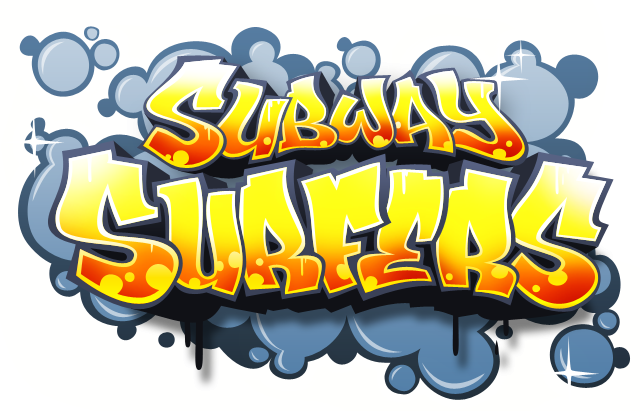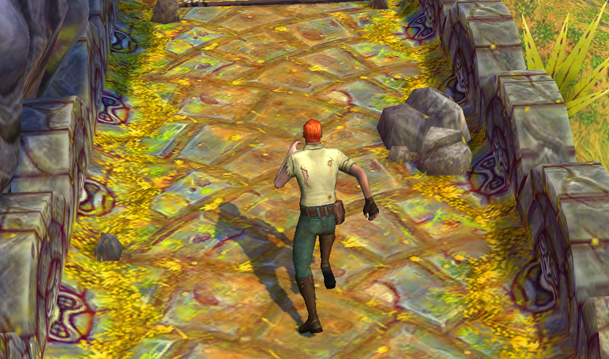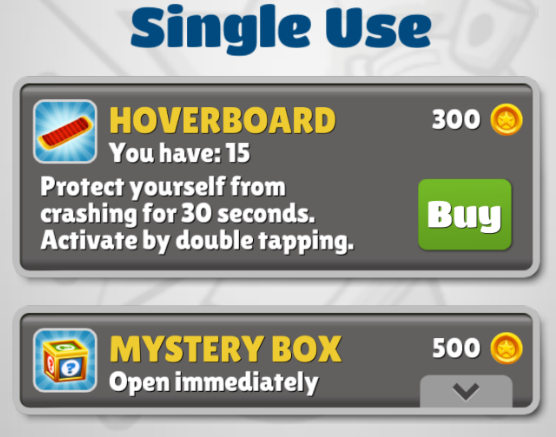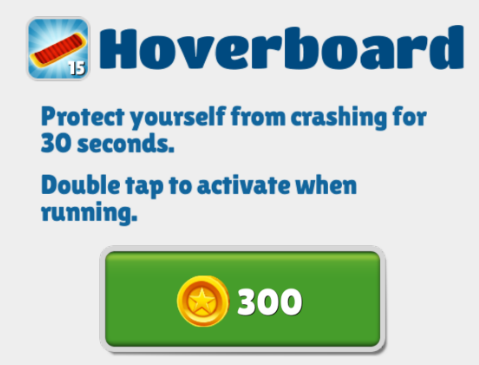A detailed analysis of the methods of user retention and monetization in the Subway Surfers game.
To begin with, a couple of figures to make it clear why we undertook to analyze Subway Surfers in detail. The project helped to achieve Kiloo DAU of 26.5 million. This is more than Zynga had in the last quarter, according to our colleagues with Techcrunch.

According to Onavo, Subway Surfers ranked 6th in the list of the most actively used iPhone games in the USA in December 2012. The retention rate of the project is phenomenal: 91% of players return to the game the day after the first launch, 60% return 30 days after the launch. The game is currently also among the top twenty cash projects for the iPhone on the American market (which is a rarity for a runner in general).

The life cycle of Subway Surfers in the box office top App Annie
What’s the secret? Looking ahead, he’s not in the gameplay. More precisely, not only in it. The game mechanics of the project largely repeats the similar one of Temple Run. But how many similar projects have been released over the past year, and how many have been in the box office for more than six months, rising to the top of the chart? There is only one – Subway Surfers.
No less high-quality, made in the same graphic manner and on the same game mechanics, Agent Dash in grossing did not rise above the 300th position, despite the fact that Apple promoted it more actively than the creation of Kiloo.

Agent Dash was not so cool
So why does one project earn the love and money of users, and the other, in many ways similar to it, is forgotten over time?
Game mechanics
As mentioned above, Subway Surfers in terms of mechanics is not far from Temple Run. But he is not a clone of the Imangi game, rather, a work on bugs.
Kiloo simplified the game mechanics of Temple Run. First of all, they refused to turn. In the Kiloo game, you run straight and only straight. Secondly, developers do not use a gyroscope.
As a result, the game became even more accessible. How much more, you ask?
On the page of the recently released Temple Run 2 in the AppStore, you can find comments from dissatisfied users complaining that some forks are invisible. And indeed, if you install the game, you can find “blind” places. It is easy to miss a fork or a turn and fall into the abyss. A casual user who has installed the game for the first time may be scared off by this. The same situation with the gyroscope. It is far from convenient for users to tilt their head sharply sideways after the smartphone.

The second Temple Run disappointed many, but its performance is very, very good
Subway Surfers, devoid of both aspects, turned out to be a game with a lower entry threshold.
Major innovations have become a clear division of the path into three tracks, jumping between which the hero avoids obstacles and moving obstacles that enliven the track. Otherwise, it’s the same endless runner: the player controls the character with swipes, collects coins, bonuses, buys new characters.

Subway Surfers
So why is the game more successful than most analogues?
Concept
Subway Surfers were made by two teams. Sybo was responsible for the concept and art. UI, monetization and user retention were taken over by Klioo.
The concept is clear: a three-dimensional runner. As for the artistic component, the bright cartoon art easily covers both children’s and women’s audiences. The protest moments of the setting (a free graffiti artist trying to escape from the law enforcement officer) fit well into social reality (protests and mass demonstrations in the USA and Europe still take place).

A young revolutionary draws Che Guevara
Could they have played a significant role in the success? Of course not.
Retention
The main thing that developers have succeeded in is user retention. The approach applied by Kiloo is in many ways similar to the one used by the authors of MMO games.
In short, there are four types of players: achievers, explorers, socialisers and killers. The task of the development team is to try to give each type in the game what they are interested in.
For achievers, the main thing is a set of points, levels, and riches. Explorers prefer to explore worlds, discover secrets, new facets of the game. Sociolizers play to communicate, and killers – to assert themselves, dominating other users (you can read more here).
By the way, it is believed that in Russia, as well as in China and South Korea, achivers and killers dominate.
What’s the point?
Kiloo took into account (or rather, tried to take into account) all these points, without forgetting about the more traditional approaches to user retention for the mobile industry..
1. Levelboard
In the game itself, you can only see your friends’ records, as well as how actively they play.

Game designers Vitya and Ksyusha, as well as political scientist Olesya, play Subway Surfers better than me
But the main feature of Subway Surfers is different. When you run, the results of your rivals are constantly being demonstrated. That is, this is not an abstract board that you look at at best a couple of times a day, but a constant reminder.: “You’re not the first, man.”

Dima is still higher
This works equally well in terms of retention for both acivers and killers.
2. Missions
To carry out each mission, you need to complete three tasks a la “crash into a bush three times”. Each mission gives an additional multiplier of points. To put it simply, the more missions you complete, the faster you score points.

In order to get the next multiplier, there is not much left
This also encourages their passage by acivers.
Also, the missions do not let the researchers get bored. For them, this is both a test and an occasion to take a closer look at the game.
3. Daily challenges
There is a very widespread approach in social and mobile games, which can be called a “daily reward”. The developers encourage the player to return to the game regularly by gifting him with in-game currency. Kiloo did about the same thing, only a little more cunning.

The more regularly you appear, the more prizes
To receive a reward, the user must collect a word from the letters on the track. It takes no more than five minutes, but the player, for example, after seeing the results of friends, can, after receiving a reward, continue to stay in the game.
So Kiloo made of the tests something like a hook for users.
A little above, the high score board was already mentioned, on which you can also see how often your friends play. So, it is still possible, conditionally, to collect resources from it. If your friend runs 50 times, then you get a certain amount of money in the in-game currency.

I’ll harvest tomorrow!
Many friends? Do they play Subway Surfers a lot? Then you definitely need to visit this “section” of the game as often as possible.
4. Content
There are items and characters in the game that cannot be bought (we will talk about monetization below). For example, a Chicky Board (about boards, too, a little later, in the section about monetization) can be obtained only by collecting 100 Easter eggs. To do this, at best, you need to run 50 times.

There won’t be such a board in the store next month. Limited edition
This strongly stimulates achievers and researchers.
5. Customization
A large number of different characters and flying boards.
6. Trophies
Very rare things that can be found on the track. They encourage researchers to return to the game.
7. Regular updates
They play a special role in Subway Surfers. Kiloo graphically changes the track every month, as well as adds new characters. Moreover, access to some of them can be obtained only within 30 days. It is clear that this forces players to return to the game again and again to see “what it has become this time.”

Football fans, hurry up!
As you can see, almost everyone can find a goal for themselves in the game. Only sociolizers remained in the “offense”. Although, to be honest, for them the opportunity to compete with friends is a great excuse to launch the game.
Monetization
Subway Surfers have very gentle monetization. In order to score even 1 million points (this is a lot, but far from the limit), you do not need to pay. The game puts skill first. However, there is literally everything you can pay for.
1. Missions
As already mentioned, the more missions you complete, the faster you score points in the game. The tasks are simple, but you can skip them. For money, of course.
2. Bonuses and upgrades
As in any other similar game, Subway Surfers has one-time bonuses, with which, for example, you can skip several thousand meters at the start. There are also upgrades of the power-ups encountered on the track.

Prices in the local store do not bite
Upgrades simply increase the duration of their active action (the magnet collecting coins does not work for five seconds, but ten and the like). It is clear that both bonuses and upgrades can be bought for in-game currency. At first, they are inexpensive, but a fifth-level magnet will either have to collect coins in the game for half an hour, or fork out.
3. Customization
Some of the characters in the game cannot be bought for money, but there are few of them. And, funnily enough, their design is made specifically for a hardcore audience. What is worth at least a girl-geek Yutani.

It is very difficult to score 500 flying saucers
There are a lot of characters that can be bought – 11 pieces. It will not be difficult to earn money for most of them in the game, but it is problematic to earn money for a glamorous Brody or an Arab sheikh Prince K without an IAP.

We are sure that this character enjoys great success in Arab countries
It is clear that both of these characters, as well as their prices, are focused on a completely understandable, well-paying audience.
4. Advertising
When switching from the highway to the main screen, a large advertising banner periodically appears. It does not annoy users and brings money to developers. Also in the game, the user can earn in-game currency by watching commercials in a special section.
5. Boards
And now we have come to the most important thing, to the boards. The fact is that in the game the main character can not only run, but also slide in the air along the track on something like a skateboard without wheels.
The board is a one-time bonus and operates on the track for a strictly limited time. Why is she?
You probably know that in Temple Run, when you crash into an obstacle, you can continue running for crystals that are sold only for real money. There is no such thing in Subway Surfers, if the user bumps into an obstacle, the game is over, start over.

The way the text is designed also matters. Two short sentences of six words are divided into paragraphs.
But there are boards in the game. If you activated the board while jogging, it insures you against “accidents”. You can buy an unlimited number of boards. It is clear that a large number of boards are required to score a large number of points on one track (although it is clear that this also depends on your skill). The bottom line is that some players have a moment when the “harvest” of in-game currency from one track turns out to be less than the required number of coins to buy boards for passing the next track to the desired indicator.
At this moment, the first thought is to pay real money, buy more boards and … go ahead!
6. One purchase per game
There is another important point on which Subway Surfers earn: double coins. This is a permanent bonus that costs 169 rubles and doubles the number of coins collected from each track.
It works great for the audience that doesn’t like F2P. This is, let’s say, another hook from Klioo: I paid once and don’t think about micropayments anymore. There is about the same moment in Clash of Clans. The first builder’s gatehouse purchased at the price is equal to the minimum IAP. Some players may stop, or they may continue to pour money into the project.
Have you noticed something else in Subway Surfers – write!
